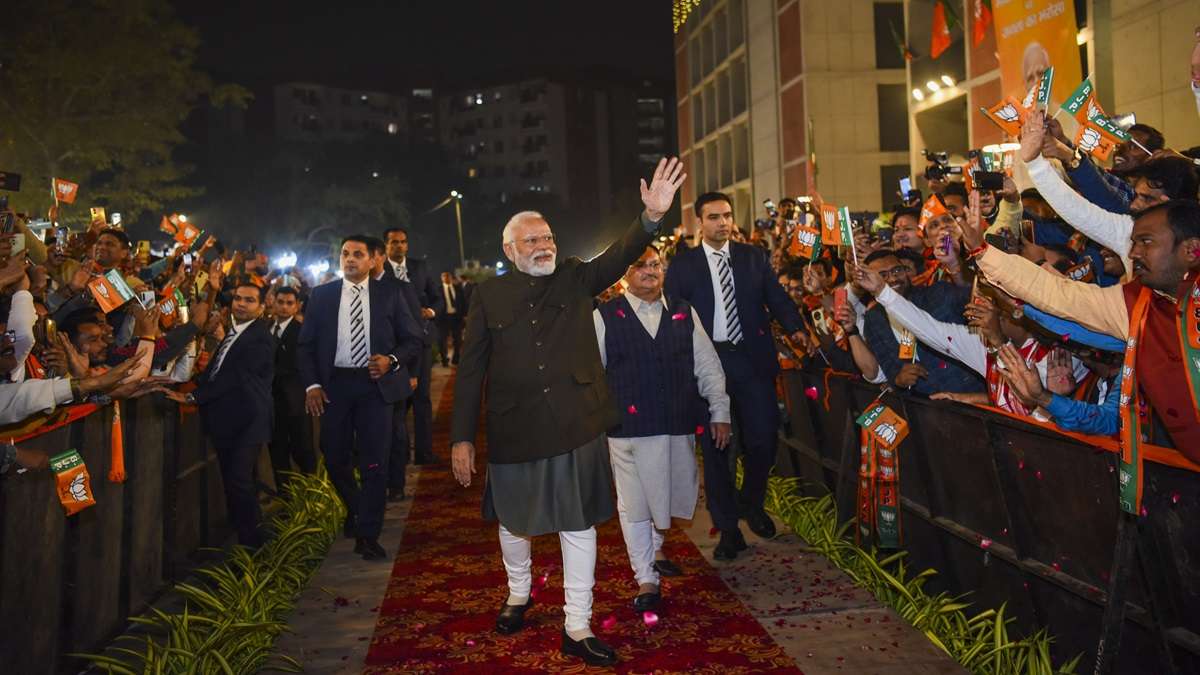As Narendra Modi embarks on his third term as Prime Minister of India, he faces a political landscape marked by continuity in policy but also significant challenges, particularly regarding inclusivity and secularism. The exclusion of Muslim representation in his Cabinet has sparked widespread debate, while the retention of key ministers underscores a desire for stability in governance.
In his third term, Modi has chosen to retain key figures within his Cabinet, signaling a continuation of his administration’s established policies. Subrahmanyam Jaishankar remains as External Affairs Minister, Amit Shah stays on as Home Minister, Nirmala Sitharaman continues as Finance Minister, and Rajnath Singh retains his position as Defense Minister. Jaishankar’s immediate focus on resolving border issues with China and addressing long-standing cross-border terrorism concerns with Pakistan suggests a steadfast approach to foreign policy.
The India-China border, spanning 3,800 kilometers, has been a historical point of contention, recently escalating to the most severe standoff in decades. Meanwhile, the Kashmir dispute continues to strain India-Pakistan relations, both nations being nuclear-armed. Experts like Harsh V. Pant from the Observer Research Foundation foresee a persistent marginalization of Pakistan and a firm stance against China in Modi’s foreign policy. This approach reflects India’s broader strategy to assert its position on the global stage through active diplomacy. Despite securing a third term, the BJP fell short of an absolute majority, winning 240 seats in the 543-member parliament. This necessitated reliance on regional allies such as the Telugu Desam Party (TDP) from Andhra Pradesh and the Janata Dal (United) from Bihar to form the government. The National Democratic Alliance (NDA), now controlling 293 seats, just surpasses the majority threshold of 272 seats.
A significant and controversial aspect of Modi’s new Cabinet is the complete absence of Muslim representation. In a nation where Muslims constitute around 200 million of the 1.4 billion population, this exclusion has drawn sharp criticism. Modi, often seen as a champion of the Hindu majority, has faced accusations of eroding India’s secular democracy through a majoritarian agenda. This approach has allegedly fostered an environment where Hindu nationalist violence against minorities, especially Muslims, has escalated. Venkat Narayana, a former economics professor, interprets the absence of Muslim ministers as a clear indication of Modi’s continued non-secular stance and pronounced anti-minority politics. However, given the significant presence of opposition parties in the parliament, Modi might need to adopt a more conciliatory and democratic approach. The opposition, having secured 232 seats, represents a considerable force that Modi cannot afford to ignore entirely.
Ajay Gudavarthy from the Centre for Political Studies at Jawaharlal Nehru University points out that the TDP, a key coalition partner, enjoys substantial Muslim backing. This dynamic could influence the BJP to temper its radical agendas from previous terms, such as mob lynching, in favor of a more culturally majoritarianism. The socio-political landscape of India under Modi’s third term is likely to be shaped by several factors, including economic policies, social reforms, and regional dynamics. Modi’s administration has previously focused on ambitious projects such as the Goods and Services Tax (GST) implementation, the Make in India initiative, and the Digital India campaign. These initiatives aimed at boosting economic growth and technological advancement are expected to continue, reflecting Modi’s development-oriented agenda. However, the exclusion of Muslims from ministerial positions presents a significant challenge to Modi’s image as a leader of all Indians. The lack of representation not only affects the perception of inclusivity but also raises concerns about the future of secularism in India. While his previous terms highlighted assertive nationalism and economic reforms, the current term demands a nuanced approach given the significant opposition presence and the need for broader support.
On the global stage, Modi’s administration will continue to navigate complex relationships with major powers. India’s strategic alliances, particularly with the United States, Japan, and Australia, under the Quad framework, are expected to play a crucial role in countering China’s influence in the Indo-Pacific region. Additionally, India’s engagement with the European Union on trade and climate change issues will be pivotal. Jaishankar’s continued role as External Affairs Minister suggests a consistent foreign policy approach, focusing on strengthening these alliances while maintaining a firm stance against adversarial neighbors. The administration’s efforts to secure India’s position in global supply chains and attract foreign investments will be critical in navigating the post-pandemic economic landscape.
As Modi begins his third term, the expectations are manifold. The retention of key ministers points to stable policy continuity, particularly in foreign relations with China and Pakistan. Domestically, the absence of Muslim representation in his Cabinet has already sparked debates about India’s democratic ethos under Modi’s leadership. Balancing coalition demands with the aspirations of a diverse electorate will be a critical test for Modi. In conclusion, Modi’s third term is poised at a crossroads, where the decisions made now will have lasting impacts on India’s socio-political fabric and its standing in the global order. Whether Modi can balance his majoritarian agenda with the need for broader inclusivity will be a key determinant of his success in this term. The coming years will be critical in revealing whether Modi’s administration can rise to these challenges and steer India towards a path of sustainable growth and social harmony.

